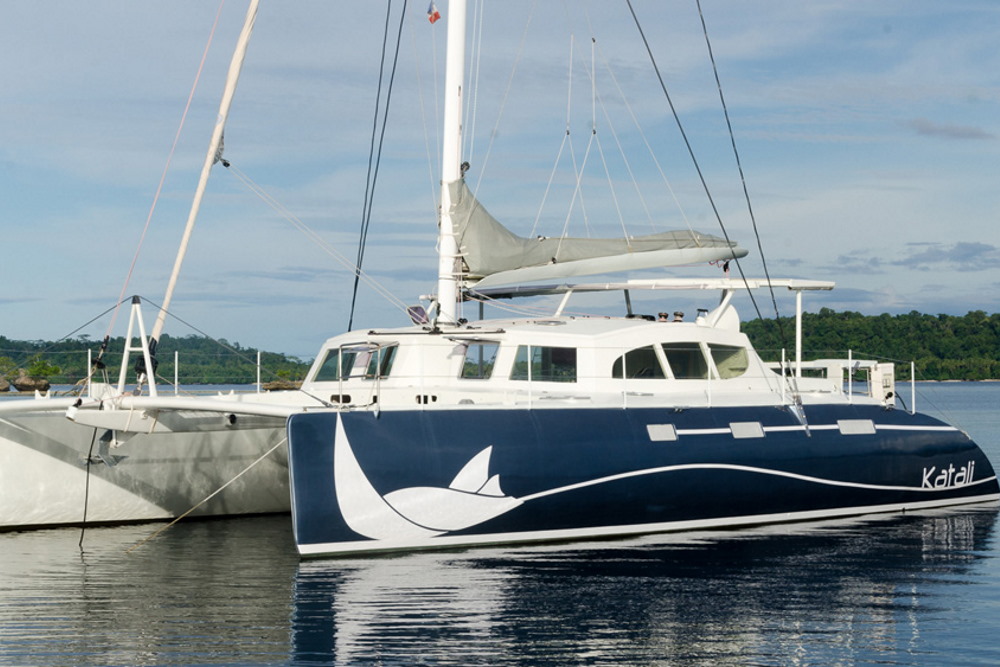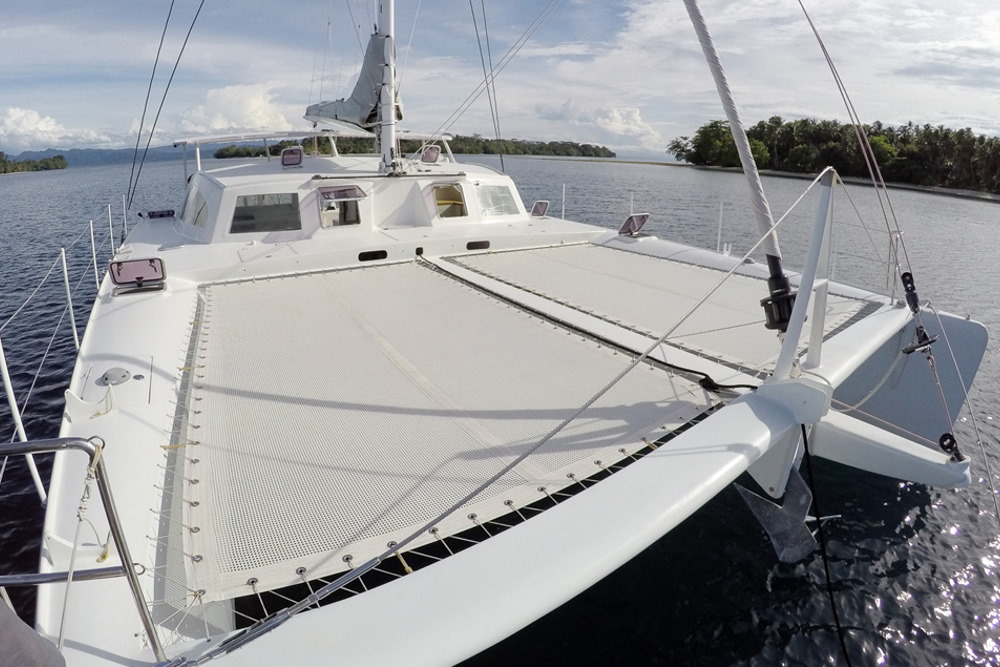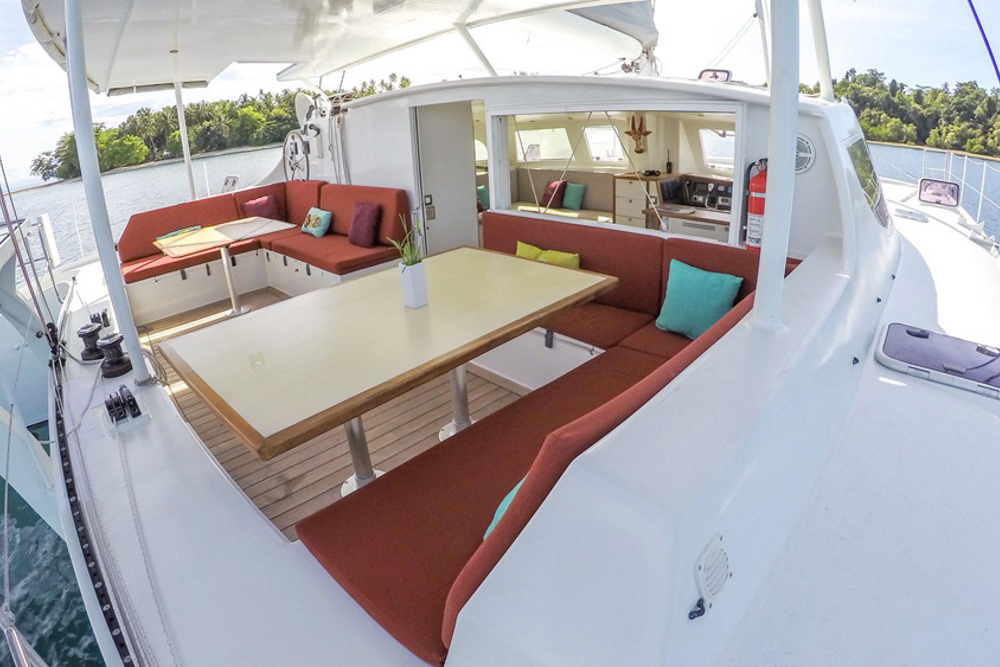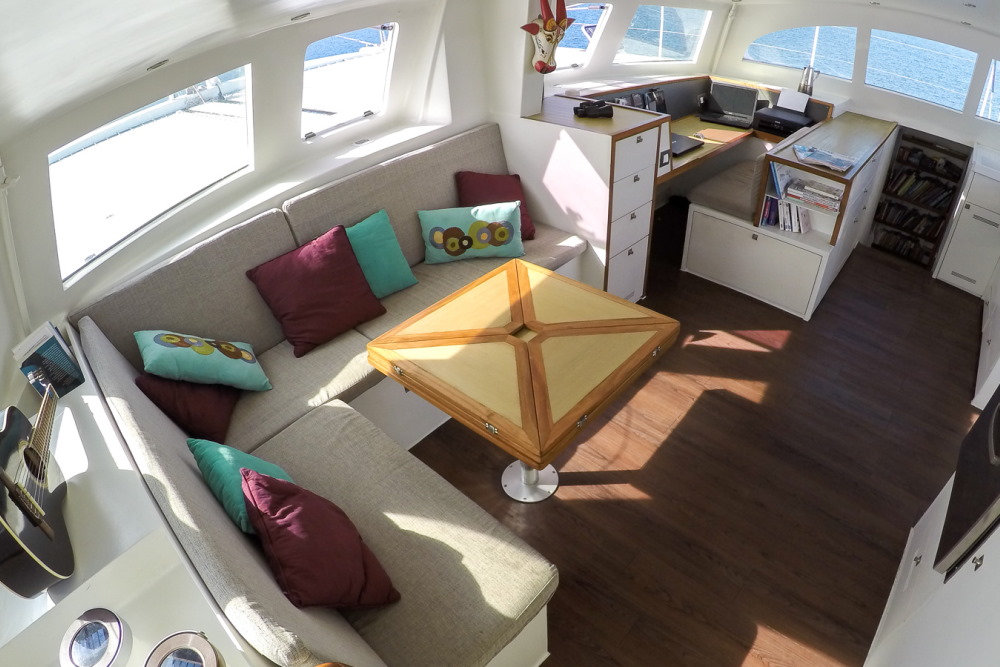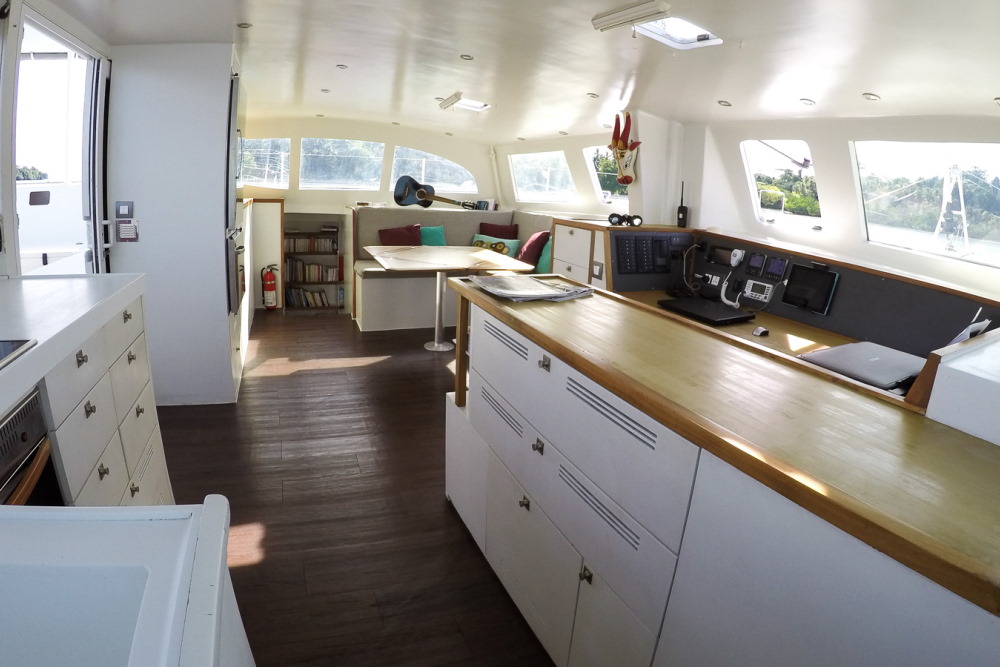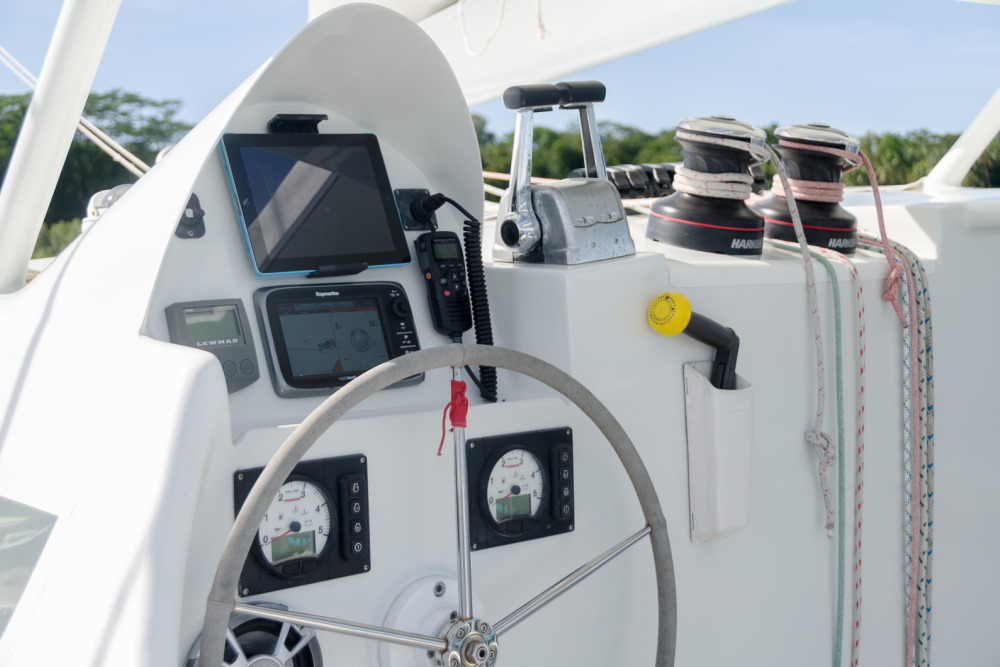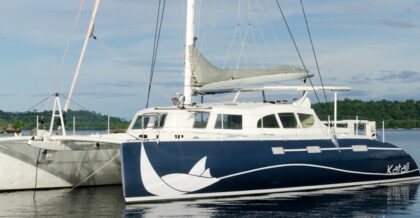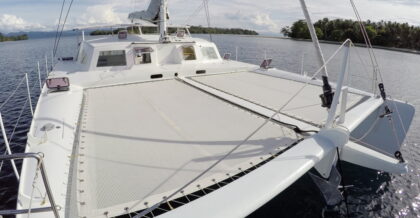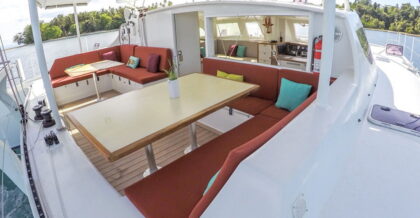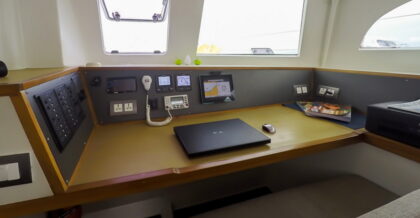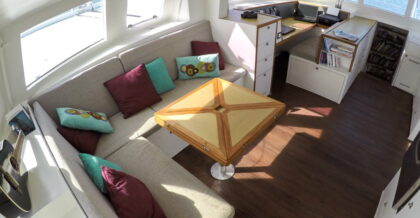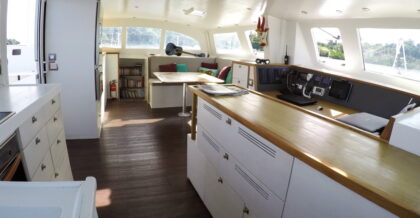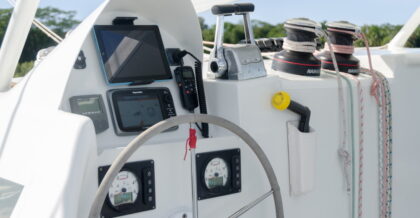The Looping 50 is an off the shelf performance catamaran plan designed by French architect Patrick Luscher.
There are Loopings from 42 to 60 foot sailing around the world, and the designs have a reputation as fast, seaworthy ocean crossing yachts. She’s quite a bit quicker than a Prout 45 or a Lagoon 450! Various yards worldwide specialise in constructing these boats.
So what makes the Looping 50 so special and how has it developed such a following over the years? Let’s take a look.
Aeronautical Designer
Patrick Luscher´s background is in aeronautics and he is a specialist in light structures with shapes that offer the least resistance to flowing water or air. He swapped a life at Airbus to one on the ocean, and the range of Looping catamarans was born.
Photo credit: Katali from atoursdumonde.com
Loopings (like Schionning catamarans from Australia) are designed as one-off construction projects by partner yards or skilled amateurs.
Each boat is pretty much a custom build. You have Patrick Luscher’s design to follow of course, and weight targets, but the amount of furnishing and cabinetry you put in is down to you. Most examples have gone for the spartan look to keep the weight off, but in general these boats have a lot more character than your standard production boat, and that’s because they reflect the owners personal input.
Sailing
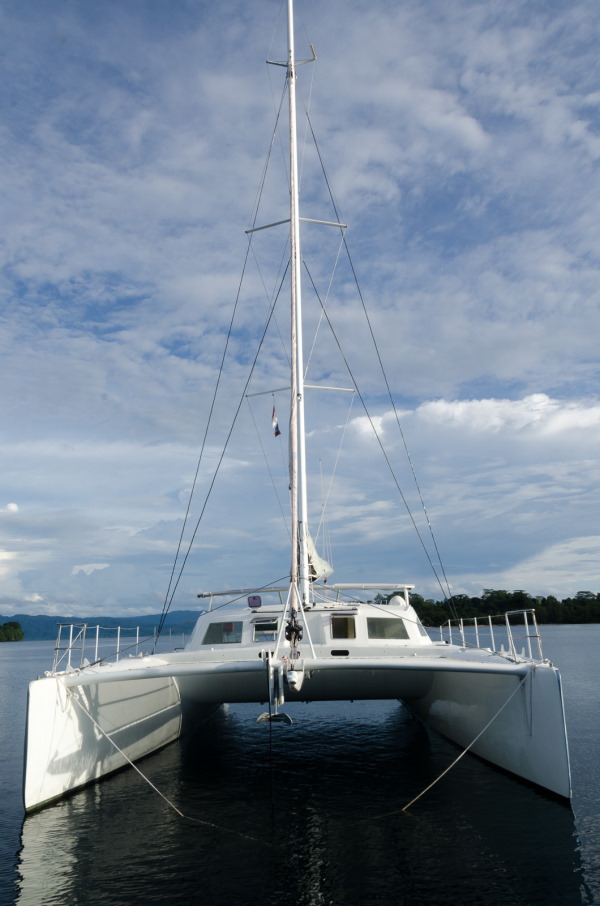 This is where the Looping 50 excels, and why she is so popular with sailors on circumnavigations. This boat is not as fast as a Marsaudon Composites ORC50, but she’s not that far off the pace!
This is where the Looping 50 excels, and why she is so popular with sailors on circumnavigations. This boat is not as fast as a Marsaudon Composites ORC50, but she’s not that far off the pace!
She’s designed for long passages with the aim of keeping the daily distance averages high, and she achieves that thanks to her light displacement (7.5 Tonnes for a 50 foot catamaran).
This is the kind of program that is suited to a yacht like the Explocat 52, although that cat will take you into higher latitudes more safely (but there’s a weight penalty).
Powerful Sail Area to Displacement
The Sail Area to Displacement ration (SA/D) clocks in at 27 – a similar number to an Outremer. She has a big beam for her length and that gives her stability- this is a yacht with a comfortable ride.
Almost all the lines come back to the helm station for easy short handed sailing. Reefing lines, halyards, the windlass, sheets, the autopilot, VHF, etc – all can be managed from here.
The helm position is just off centre on the main bulkhead, port side. This won’t suit everyone, but it is well protected and close to the action. The Looping 50 does not have daggerboards, so you are likely to lose performance in lighter airs upwind. When the breeze freshens up, you won’t notice the difference.
A Fast Package
This is a boat that should accelerate quickly into the low teens and beyond thanks to her low weight, but don’t overload her. Like any good performance cat she has nice long nets to keep the weight off the bow. The self tacking jib sheets run back to a track on the top of the coach roof freeing up lots of space on the foredeck
Living Space
This is customisable, but in general these boats come with 4 double berths and 2 bathrooms. The forward cabins are surprisingly big for a performance cat, but you’ll find that there is much less light down in the hulls than you would find in a modern catamaran design. But then, the hulls are for sleeping, right?
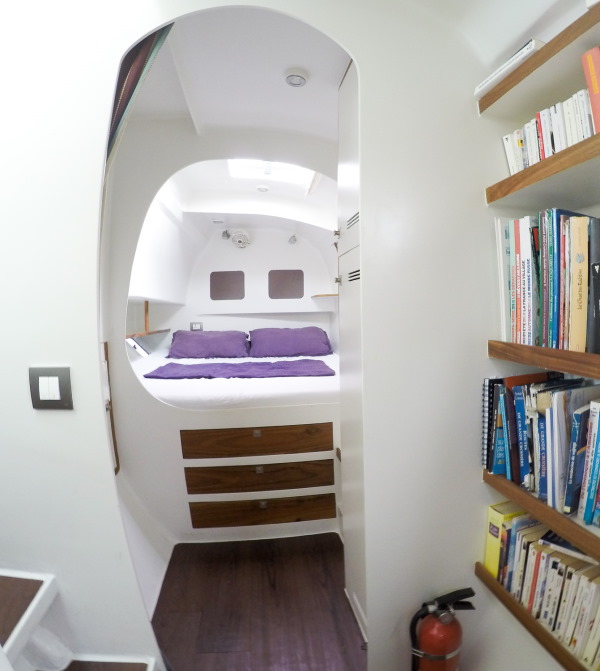
Up top, the saloon has plenty of space with an L-shaped sofa wrapped around the dining table to port and a nice big nav station with room for two to starboard.
Many of these cats come with full size American fridges with the galley facing aft on the starboard side which can be connected to the aft cockpit with a sliding window and either more workspace or an additional sofa facing forward to port (I love that configuration). In any case, it´s up to you to design the space- you have a big footprint to play with).
Step Down Saloon
Unlike most modern designs, you will need to step up into the aft cockpit through a single sliding door. The aft cockpit is smaller than most recent designs, but there is plenty of space for a wrap around sofa and an outside dining area with a table for 10 that can be built to telescope down into a day bed.
Generally this space is multifunctional. When you are under way, the focus is on the helm and lines, but at anchor it can be adapted to free up the maximum living space.
At the helm off to the port side. 2 winches manage all of your halyards, furling lines and headsail sheets, and there are twin winches on the aft beam to manage your mainsail, tracking and dinghy on the davits.
Summary
Looping designs enable you to get a lot of performance boat for your money. Because the architect, Patrick Luscher, has so many nautical miles under his belt, you´ll notice the little design details that can only have come from a long distance cruiser. Fast, seaworthy, good looking catamarans.
Technical Specification
| Draft | 1.2m / 3 ft |
|---|---|
| Disp. (Light) | 7,500 Kg / 16,500 lbs |
| D/L | 59.7 |
| Mainsail | 70 sqm |
| SA/D | 27 |
| Power | 2 x 40 HP |
| Self Tacking Jib | 32sqm |
| Length | 15.2m / 50ft |
| Beam | 8m / 15 ft |
| Gennaker | 90 sqm |
| SA/D* | 27 |
| Hulls (typical) | Red Cedar / Fiber |
| Decks (typical) | Foam / Plywood |
| Beams (typical) | Plywood / fiber |
Contact Katamarans
Share your details with us and we’ll be in touch to discuss further.
"*" indicates required fields

